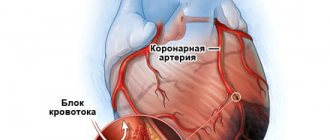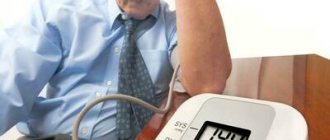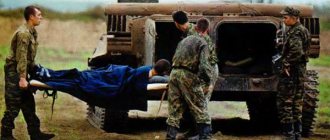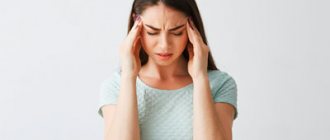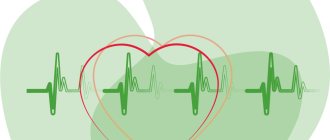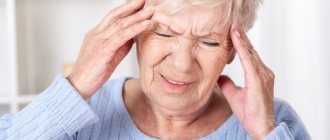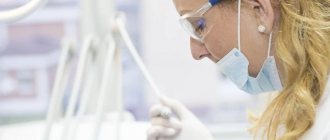Hemorrhoids are a fairly common disease. According to official data, it affects about 20% of people, but given the sensitivity of the problem, the actual incidence rates may be even higher. Many patients, embarrassed to show their problem to the doctor, lead the disease to the development of complications. They can be very different: infection, thrombosis, paraproctitis, proctitis. Sometimes a node ruptures with hemorrhoidal bleeding. So what to do if your hemorrhoids burst?
What are hemorrhoids and how do they manifest?
Hemorrhoids are a vascular disease that is characterized by varicose veins of the cavernous hemorrhoidal plexuses of the rectal veins. The immediate cause of this pathology is an excessive increase in blood pressure in the vessels of the rectum and weakness of the venous wall of the drainage vessels.
Reference. Favorable factors for the development of the disease are considered to be a sedentary lifestyle, heavy lifting, pregnancy and childbirth.
Based on location, nodes are divided into external and internal
External hemorrhoids appear around the anus under the skin, while internal hemorrhoids appear inside the anal canal. They are covered with the mucous membrane of the rectum. With a combined course of internal and external manifestations of the disease, combined hemorrhoids are diagnosed. According to clinical signs, the disease is divided into acute and chronic.
Clinically, hemorrhoids are manifested by pain that occurs mainly during defecation, itching of the anal area, periodic appearance of blood from the anus, and prolapse of internal nodes. The severity of hemorrhoid symptoms and the size of the nodes determine the stage of the process.
Stages of development of internal hemorrhoids
Why does a hemorrhoid rupture?
Due to acute hemorrhoids, in which severe symptoms are observed (severe pain, enlarged nodes, pain during defecation), thrombosis of the hemorrhoidal node may develop. The same complication occurs with exacerbation of chronic hemorrhoids. In both cases, in a greatly enlarged node, blood thickening and blood clot formation are observed. This happens when the dilated hemorrhoidal veins are severely overfilled with blood. Next, an inflammatory process forms around such a node.
During acute thrombosis, several successive stages are distinguished:
- Isolated node thrombosis.
- Thrombosis of the hemorrhoid with local inflammatory reaction of the perianal folds.
- Thrombosis, in addition to inflammation, is accompanied by necrotic changes in the node.
A pathological increase in blood pressure in the node contributes to its thrombosis and inflammation
Many patients with this disease wonder: can hemorrhoids burst? Sometimes the pressure in the veins can be so strong that the venous wall can actually rupture, especially if there is thrombus formation and local inflammation.
Triggering factors for hemorrhoidal rupture are:
- Severe straining during defecation. In this case, blood flows in large quantities to the hemorrhoids, overflowing them. The walls of the vessels may not withstand and rupture. In this case, bleeding from the burst node is observed.
- Improper nutrition, which leads to hardening of stool and the development of constipation. With constipation, a person has to use strong straining to empty the intestines, which can lead to rupture of hemorrhoids.
- Pregnancy and childbirth. During the period of bearing a child, due to hormonal changes and the growing uterus, the outflow of blood from the hemorrhoidal veins is disrupted. All this contributes to stretching of the walls of blood vessels and increases the chance of rupture of the node. This risk increases many times during childbirth, when the load on the vascular bed increases greatly.
- Lifting a large load. When lifting heavy objects, the pressure in the abdominal cavity and pelvis increases, the outflow of blood from the hemorrhoidal veins becomes very difficult, they fill with blood and expand. If you suddenly lift an impressive load when you have hemorrhoids, the nodes can burst, which leads to rectal bleeding.
- During anal sex in the presence of hemorrhoids, mechanical trauma to the nodes and their overflow with blood occurs, which also threatens the rupture of these formations.
- Sometimes perforation of a hemorrhoid can occur during a hypertensive crisis in elderly people, when blood pressure reaches very high numbers.
- Physical inactivity and constant sitting while working.
- Abuse of spicy, sour, fried, smoked foods, alcohol, spices, which leads to frequent exacerbations of hemorrhoids.
Hemostatic drugs
Systemic venotonics and hemostatic agents - drugs with angioprotective properties and external therapy - can help stop bleeding in the event of sudden rupture of external or rectal hemorrhoids. The most effective drugs are in tablet form:
- Vikasol, a synthetic analogue of vitamin K, normalizes blood clotting and prevents the formation of nodes.
- Dicynone is a hemostatic drug that increases the resistance of capillaries to negative influences, balances microcirculation, and stimulates the formation of blood clots at the site of vascular damage.
- Proctonis is a shark cartilage based laxative that increases blood clotting, relieves pain and inflammation, stimulates tissue healing, soothes anal spasms and prevents secondary infections.
- Troxevasin is an angioprotector with venotonic and hemostatic properties, based on routine, restores venous valves, capillary structure, balances blood flow through the anus, affects blood clotting, inhibits the twisting of nodes (analogs - Troxerutin, Ascorutin).
What happens when hemorrhoids rupture?
At the moment when hemorrhoids burst, pain is observed, followed by bleeding, during which the blood clot comes out through the damaged vessel wall. In the future, many patients note an improvement in their condition due to the cessation of pain that accompanied thrombosis.
Attention! When a node ruptures, it is important to completely empty the vessel of blood clots. Otherwise, there is a risk of infection of the wound surface.
The edges of the rupture of the vessel and mucosa (anal fimbria) are often very painful, and, like the wound itself, are an entry point for infection. Therefore, a person with a similar problem needs to carefully monitor the hygiene of the anal area. In case of infection, suppuration, increased pain, increased body temperature, and chills can be observed. The appearance of such symptoms is a reason for urgent hospitalization.
Consequences: how to prevent complications?
Now you know whether a hemorrhoid can burst. What consequences does this pose? If measures are not taken in a timely manner, inflammation and swelling, increased pain, and suppuration are possible. The edges of torn tissues die, increasing the inflammatory process. Defecation becomes very painful and the patient avoids going to the toilet, which threatens severe constipation and worsens the general condition of the patient.
It is very important to stop the bleeding and prevent its recovery. Blood loss can lead to anemia, which is especially dangerous if the immune system is weakened. In the most severe cases, sepsis is possible.
Diagnosis of pathology
The most correct action if the hemorrhoidal node has burst is a visit to the proctologist. This needs to be done as quickly as possible. Indeed, in some cases it is impossible to do without qualified surgical intervention. In addition, if blood comes from the anus, then rupture of the hemorrhoid is not the only cause of this symptom.
If you have rectal bleeding, you should not hesitate to visit a doctor, because other more dangerous diseases can be hidden under the mask of hemorrhoids
Proctological examination includes:
- collection of complaints and medical history;
- inspection and palpation of the perianal area;
- digital rectal examination;
- anoscopy;
- sigmoidoscopy;
- fibrocolonoscopy.
Some of the instrumental examinations may not be carried out if more accessible and simpler methods allow an accurate diagnosis. In any case, the scope of the diagnostic program is determined only by the proctologist.
What to do if a hemorrhoid ruptures?
If a hemorrhoid bursts and bleeding appears, you should consult a proctologist. If you cannot get medical advice, you should immediately try to help yourself. To do this, you can use the following recommendations:
- Take a cold sitz bath. Cold promotes vasospasm and stops bleeding. Water must be boiled to prevent infection. The duration of the procedure should not exceed 5 minutes. You can repeat up to 4 times a day. It is also possible to apply an ice compress to the anal area for 10 minutes.
- If an external hemorrhoid has burst, you should generously moisten sterile cotton wool or a bandage in hydrogen peroxide and apply it to the bleeding formation. For internal hemorrhoids, use an enema with peroxide diluted in half with boiled water.
- Insert an ice suppository into the anal canal. Such suppositories can be made at home from decoctions of nettle, chamomile, St. John's wort, yarrow, propolis, and calendula.
- Take a local sitz bath with a decoction of calamus root, buckthorn bark, calendula, horse chestnut, and chamomile. These plants will help stop bleeding. During the period of bleeding, the temperature of the bath water should not be high. But after the bleeding stops, it is possible to use warm baths with the same medicinal plants to quickly resolve blood clots.
- Oral administration of decoctions of medicinal plants with a vasoconstrictor effect: horse chestnut, ginkgo biloba.
- For prolonged bleeding, it is recommended to administer a suppository with adrenaline, which has a spastic effect on blood vessels and a slight analgesic effect.
- Take a pain reliever if the pain is severe. For this purpose, drugs based on Diclofenac, Ibuprofen, Nimesulide are used. However, any pain must be treated and not tolerated, as it increases muscle spasm of the perineum, which impairs blood circulation in the hemorrhoids.
- Local application of ointments after stopping bleeding (Troxevasin, Heparin, Levomekol), which help tone the veins, promotes the resorption of blood clots.
It is advisable to take any medications for hemorrhoids after consultation with a doctor.
General recommendations suggest the exclusion of any physical activity, as it can increase bleeding and resume it after successful stopping. It is recommended to lie on your stomach or back. Even a sitting position should not be taken unless absolutely necessary.
Symptoms and signs
When hemorrhoids rupture, pain occurs and bleeding begins. The node may not be painful. A tumor-like formation at the site of the bump begins to form a little later. This occurs due to tissue saturation with blood and acute reactive inflammation. These are the primary signs of rupture of external hemorrhoids.
Bleeding
If the internal node bursts, the symptoms will be different. The pain may be mild, then the moment of rupture will go unnoticed. More often, severe and sharp pain occurs, as well as bleeding. Depending on the size of the node damage, general signs of blood loss may appear:
- dizziness,
- weakness,
- noise in ears,
- flashing “flies” before the eyes.
When blood accumulates inside the ampulla of the rectum, a false urge to defecate appears. If there were feces in the intestine, they will be mixed with scarlet blood. If it was empty, blood would flow in the form of diarrhea. This is very frightening, increases heart rate and causes panic.
Read also: What to do at home if hemorrhoids come out, causes of pathology, treatment methods
Fright, panic at the sight of bleeding
Important! When the cone ruptures, the blood is scarlet, liquid, without clots or signs of coagulation. This means that the source of bleeding is the anal nodes, and not the upper parts of the large intestine.
If a lump bursts when straining during the act of defecation, this moment may go completely unnoticed. Any degree of pain is perceived as normal. After leaving the toilet, you may feel like your underwear is wet, indicating continued bleeding and damage to the lump. When hemorrhoids rupture, the pain is significant - sharp, throbbing. It is necessary to take painkillers in tablets or injections.
When is surgical correction necessary?
In some cases, conservative therapy does not give the desired results in treating a burst hemorrhoid. Therefore, if bleeding continues during the day and your health progressively worsens, you should consult a proctologist. It is possible that the thrombus from the node was not completely evacuated with the released blood through the perforated vein. In this case, surgical revision may be necessary.
In addition, other hemorrhoids may be in a state of thrombosis and threatening rupture. In this case, the doctor can significantly alleviate the patient’s condition by making an incision over the node, followed by its revision and suturing.
Surgical treatment is the only way to radically cure hemorrhoids
Surgical treatment is also most often inevitable when signs of purulent inflammation appear in the node.
When is surgery necessary?
Minor bleeding will stop on its own if you use the correct algorithm of actions. Hemorrhoids can burst without preconditions.
You definitely need to see a doctor. Often those whose bleeding does not stop on its own end up on the operating table. Then they operate according to vital indications. It's always worse than planned. Because the disease does not take into account the patient’s plans, does not allow examination, preparation for surgery, or collection of material resources.
In case of massive bleeding, the surgeon, under local anesthesia, sutures the edges of the veins. It can also excise adjacent tissue, fix a node, and stop bleeding. The operation is an emergency, the goal is to save life. Therefore, it is necessary to properly treat the disease from the very beginning.
Hemorrhoids can burst during pregnancy. The uterus with the fetus puts pressure on the venous plexus, causing it to become congested. Carrying a child is often accompanied by constipation. Constipation and congestion are risk factors for lump rupture and dangerous complications. For pregnant women, this situation is worse, because the woman’s body during this period has a natural physiological tendency to reduce coagulability, which is necessary for normal gestation. The use of hemostatic drugs during pregnancy is associated with risks for the child.
Hemorrhoids during pregnancy
For frequently and profusely bleeding hemorrhoids, it is important to consult a proctologist. You need to undergo all necessary examinations. At the same time, decide on the issue of planned surgical intervention.
Treatment with minimally invasive methods
If you are admitted with bleeding that does not stop, we will talk about surgical suturing of the wound. Therefore, to avoid extreme situations, treatment should be started in advance. Nowadays, surgery is preceded by minimally invasive methods:
- introduction of a sclerosing agent,
- disarterization of nodes,
- vein ligation
Attention! Modern small treatments take place without the “atmosphere of a hospital room.” These are quick procedures. They do not need to go to the hospital and spend the night there.
Based on the stage of hemorrhoids, the patient may still be indicated for drug therapy. But if there is a bleeding node, even a small one, suppositories will not help. Therefore, ligating the knot will be sufficient.
What to do if pus appears?
Purulent discharge from a node is a clear sign of bacterial infection, even if the hemorrhoidal lump burst a long time ago and the bleeding has already stopped. Suppuration may be a sign of paraproctitis or rectal fistula. Purulent inflammation is accompanied by fever, chills, general weakness and loss of appetite. If such symptoms appear, you should immediately seek medical help.
In addition to surgical treatment, antibiotic therapy is necessarily prescribed with its further correction in accordance with the data of bacterial culture and antibiogram.
How to treat hemorrhoids?
Drug treatment for hemorrhoids helps relieve symptoms. Most often, absorbable creams, ointments and suppositories are used for hemorrhoidal cones. It is more convenient to apply cream or ointment to external hemorrhoids, and in the presence of internal hemorrhoids, suppositories will help relieve the condition.
Most medicines consist of natural ingredients that are practically not absorbed into the blood. Therefore, the use of some suppositories and ointments for hemorrhoids is allowed during pregnancy and breastfeeding.
Ice compresses, microenemas and cold baths with decoctions of string, yarrow, stinging nettle, and chamomile can dissolve the cones.
Surgical treatment of hemorrhoidal cones is used only in severe forms of the disease. Surgery may be used when other treatments do not help.
It is also used if hemorrhoidal lumps are causing severe irritation to the patient's lifestyle or in case of a medical emergency (for example, uncontrollable effusion of blood or pus into the anus along with severe rectal pain).
Surgical treatment of hemorrhoidal cones is used only in severe forms of the disease.
Surgery to treat hemorrhoid lumps is considered the most acceptable treatment for severe internal hemorrhoids, but external hemorrhoids are not usually removed by hemorrhoidectomy unless they are very large and uncomfortable swellings.
If hemorrhoids occur with slight bleeding, sclerotherapy is used. The doctor administers a special medicine to shrink hemorrhoidal tissue. Efficiency varies. If sclerotherapy for hemorrhoids does not help, a rubber bandage may be required, which is used for severe internal hemorrhoids.
An elastic band ties the hemorrhoid to cut off blood flow to it. As a result, the node shrinks, dies and, eventually, disappears on its own after about a week. Some doctors use infrared photocoagulation for hemorrhoids.
An infrared sensor focuses on the buds and burns them. This procedure requires multiple sessions and has a high recurrence rate. In addition to light, coagulation can also be carried out by laser or electricity.
Prevention of knot rupture
To prevent perforation of hemorrhoids, you should not allow the disease to worsen and follow the following recommendations:
- Regular physical activity, which helps improve blood circulation in the pelvic organs. Prolonged sitting should be avoided. When working sedentarily, you need to get up every 30 minutes and walk around for at least a few minutes.
- Gymnastics for the pelvic floor muscles consists of contracting the external anal sphincter and other intimate muscles. Its regular implementation contributes to the effective emptying of hemorrhoidal veins. Contractions are performed at a fast and slow pace 15 times, several approaches per day.
- Hygiene measures involve mandatory washing of the anal area after the next bowel movement with running water and soap. This prevents infection of the injured area of skin or mucous membrane.
- Dietary nutrition involves excluding from the diet fatty, sour, hot, spicy foods and alcohol, which contribute to the exacerbation of hemorrhoids, leading to the nodes bursting. In addition, to prevent constipation, your daily menu should include foods rich in fiber (fresh vegetables, fruits, bran) and dairy products.
- Systemic course use of venotonics helps strengthen the vascular wall (Detralex, Phlebodia, Aescusan, Troxevasin).
- Local treatment with wound-healing ointments that accelerate the regeneration of the mucous membrane and skin over hemorrhoids that have burst (Methyluracil, Proctosan, Aurobin). You can also use suppositories with sea buckthorn oil.
- Local treatment of thrombosis, as the main risk factor for node rupture (Nigepan, Gepatrombin G, Troxevasin).
Thus, if you treat hemorrhoids correctly and monitor their condition, following all the doctor’s recommendations, complications rarely occur. If hemorrhoids burst, you need to visit a proctologist as soon as possible, even if the bleeding was stopped on your own.

